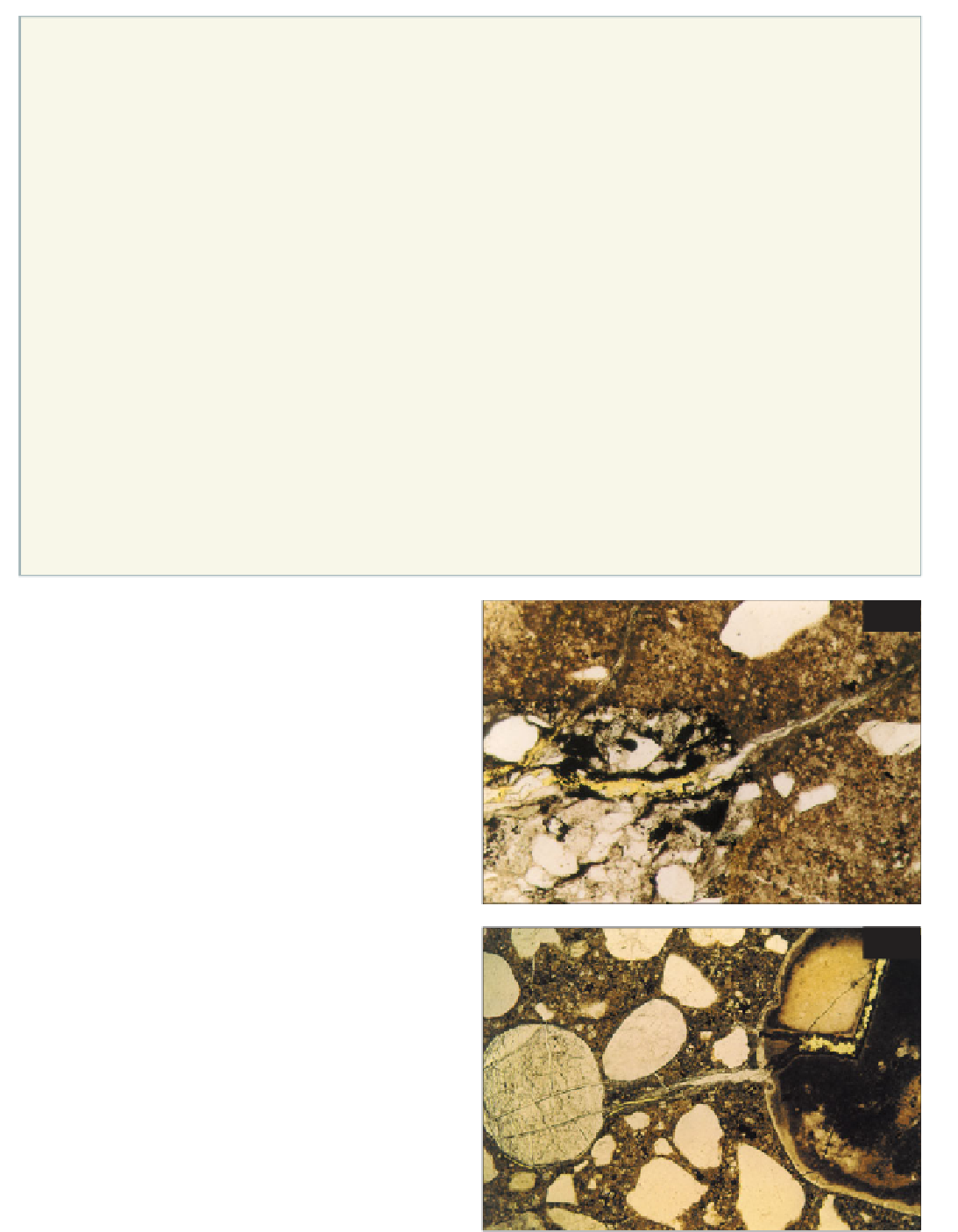Geoscience Reference
In-Depth Information
Table 25
Classification of crack severity associated with AAR
Grade
Cracking
Microscopical observations
classification
0
No cracking
No cracking observed
1
Very slight
Microcracks (1-10 μm wide), confined mainly to cement matrix and sporadically
at cement/aggregate interfaces. No significant internal aggregate cracking
2
Slight
Microcracks and fine cracks up to 40 μm wide, usually isolated, not forming a network.
May originate from aggregates but do not propagate far into surrounding cement
matrix. Sporadic internal and peripheral cracking of aggregates may be present
3
Moderate
Fine cracks (10-100 μm wide) that begin to form an interconnecting network linking
sites of expansive reaction. Internal and peripheral cracking of aggregates may be
common. Cracks may contain secondary deposits (ASR gel, ettringite, and so on)
4
Severe
Cracks (100 μm-1 mm wide) form an interconnecting system of ASR gel-filled
cracks that link reaction sites, throughout the concrete. Much internal aggregate
cracking may be evident. May exhibit evidence of severe leaching with
secondary deposits (ettringite, portlandite, calcite) in cracks
5
Very severe
Large cracks (>1 mm wide) abundant throughout. Much internal aggregate
cracking may be evident. The effects of leaching may be very advanced
6
Concrete disintegrated
219
219
ASR associated with crushed greywacke
aggregate. A greywacke coarse aggregate particle
(lower left) exhibits internal cracking (yellow) with
cracks running into the cement matrix (brown) filled
with alkali-silica gel (light grey); PPT, ×150.
220
220
ASR associated with flint (chert) coarse aggregate.
A flint particle (dark brown) is internally cracked
(yellow) and the adjacent cement matrix exhibits
alkali-silica gel-filled cracks (white). The cracks
interconnect with a small air void that is competely
filled with gel (left); PPT, ×150.




